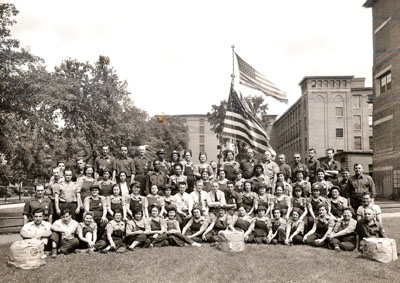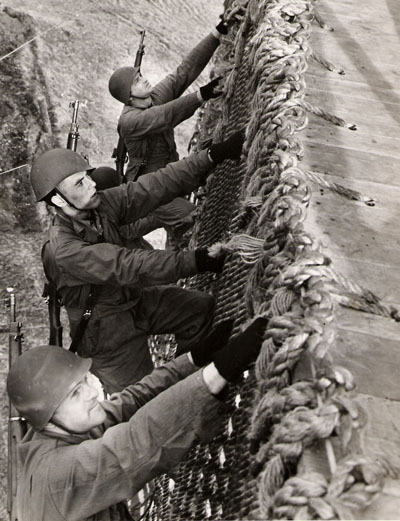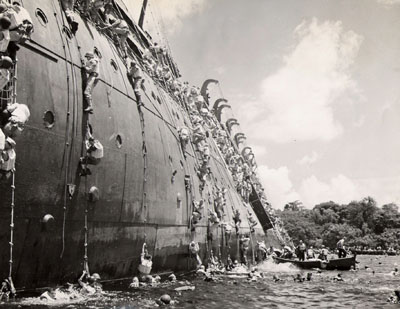Jute Rope in WWII
By: Stefanie T. and Krystal F.
How did the Ludlow Manufacturing Associates help out during
World War II?
After looking at all the pictures, what were some of the different uses of rope?
Our primary sources were pictures from the 1940’s during World War II that showed different activities. Though the pictures showed different activities, there was something in common in all of them, which was the rope.

"Ludlow Rope Makers" during WWII
Ludlow Manufacturing Associates
This picture is of men and women who worked for the Ludlow Mills. On the back of the photo, written in pencil, it says “Ludlow Rope Makers.” As you can see, they are in front of the mills with their products. There are three bags of jute rope and there is also the American flag, which shows that during the war they were very patriotic.

"Ludlow Rope"
This next picture was taken on April 28, 1943. It is an “Official U.S Navy Photograph.” It shows the U.S. Navy ground crew coiling up the ropes which were used for beaching large sea planes. A Navy Coronado plane is in the background. On the back of the photo, in pencil, “Ludlow Rope” is written.

Using Ludlow Rope
This third picture shows U.S Army men climbing up a rope wall in full uniform. This picture is also an “Official U.S Navy Photograph.” As shown, they were either training for the war or in the war.

SS PRESIDENT COOLIDGE
December 12, 1942
This last picture is again an “Official U.S Navy Photograph.” In the picture is the SS PRESIDENT COOLIDGE ship. The U.S soldiers are climbing down the sides of the ship using rope “. . . after the 22,000-ton troop transport struck a mine off a small South Pacific island. Captain Henry Nelson, the skipper said, the ship was beached and later went to the bottom with the loss of only two men out of more than 4,000 aboard. Loss of the SS PRESIDENT COOLIDGE was announced by the Navy, December 12, 1942.”
The similarities in all of the photos are the ropes. By examining the photos we can infer that the Ludlow Manufacturing Associates were a big part of World War II. Seeing that Ludlow Manufacturing Associates had pictures taken in the war of the different uses of Ludlow rope, we can infer that they were very proud of what they were manufacturing and felt that what they were doing was a big help.